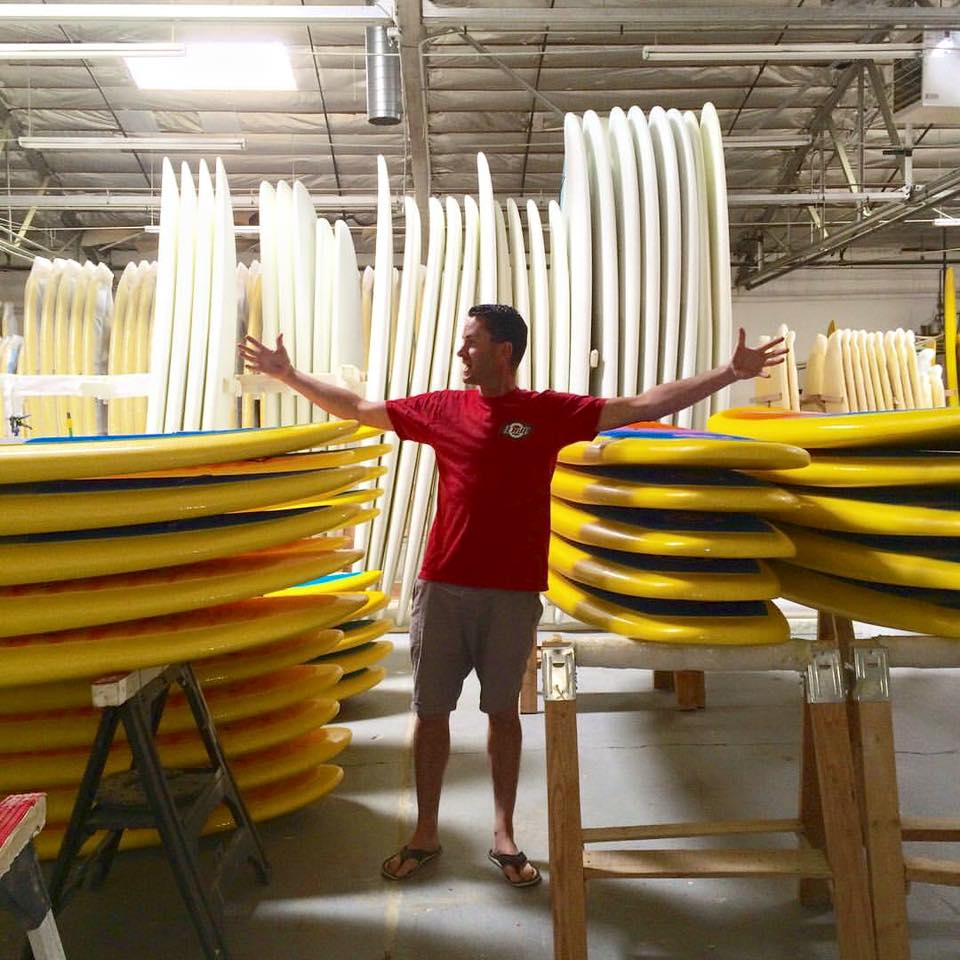
Behind the Scenes: The Intricate Manufacturing Process of a Stand Up Paddle Board
Stand up paddle boarding, a fusion of adventure and fitness, has sailed to the forefront of water sports. At the heart of this exhilarating activity is the SUP board, a marvel of modern craftsmanship. This guide offers an exclusive peek into the complex process of creating stand up paddle boards, highlighting the dedication to quality that marks the journey from raw materials to the water-ready marvels under your feet.
Introduction

Stand up paddle boarding (SUP) is an exciting blend of fitness and fun that’s gaining popularity worldwide. At the heart of this thrilling sport is the stand up paddle board itself, crafted with precision and care. Knowing how these boards are made can give you a deeper appreciation of paddle boarding. Whether you’re looking for a beginner-friendly board or a specialized one, the best choices are always those made with quality construction. In this guide, we’ll take you behind the scenes to uncover the meticulous process of making stand up paddle boards.
Dissecting the Stand Up Paddle Board: Core Elements
Before we dive into the fascinating world of paddle board manufacturing, it's essential to understand the main components that make up a stand up paddle board. These elements influence the board's performance, stability, and overall user experience.
Anatomy of a Paddle Board
A stand up paddle board might seem simple at first glance, but its functionality comes from the careful integration of its parts. Key components include the deck pad, which provides comfort and grip; the leash attachment point for safety; and the center fin box that helps with directional stability. Knowing about these parts can help you appreciate the craftsmanship involved in each board. For more details on these components, check out this comprehensive article on SUP construction methods.
The Great Divide: Inflatable SUP Boards vs. Solid Boards
Stand up paddle boards come in two main types: inflatable and solid. Each has its own unique advantages. Inflatable paddle boards are known for their portability and durability. They can be deflated, rolled up, and easily carried, making them perfect for on-the-go adventurers. Solid boards, on the other hand, are favored by enthusiasts for their superior performance, glide, and traditional feel on the water.
The Birth of a Paddle Board: The Manufacturing Process
Crafting Solid Paddle Boards: A Balance of Art and Science
Creating solid paddle boards is an intricate blend of engineering and craftsmanship. These boards usually have a foam core encased in materials like fiberglass, carbon fiber, or a tough polymer. Different hull designs, such as the displacement hull for long-distance paddling and the planing hull for a smooth ride on flat water, cater to various paddling styles and conditions.
The process starts with shaping the foam core to define the board's contours and performance characteristics. This core is then wrapped in layers of fiberglass or carbon fiber using epoxy resin, forming a hard, protective shell. This meticulous process requires precision and expertise, resulting in a durable board that doesn’t compromise on performance.
Crafting Inflatable Paddle Boards: An Innovation in Portability
Inflatable paddle boards might seem straightforward, but they use a unique technology called a drop stitch core. Thousands of polyester threads connect the top and bottom layers, allowing the board to maintain its shape and rigidity when inflated while still being deflatable for easy storage. The outer shell is typically made of military-grade PVC for exceptional durability, making them resistant to dings and scrapes. Learn more about the making of inflatable paddle boards.
The Finishing Touches: Attention to Detail
The Importance of Quality Control
Whether solid or inflatable, every paddle board undergoes rigorous quality control before reaching consumers. This ensures that all products meet strict industry standards, providing buyers with reliable and durable equipment. Companies use pressure tests, water trials, and manual inspections to ensure the final product is flawless. To learn more about the importance of durability in paddle boards, check out this article on SUP durability.
The Aesthetic Appeal
Beyond functionality and durability, aesthetics play a significant role in paddle board production. Each board is designed to reflect its personality with different colors, patterns, and graphics. These design choices are thoughtfully made to capture the spirit of the sport and resonate with paddlers, resulting in boards that are both functional and visually appealing.
The Environment’s Role: Sustainable Practices in Paddle Board Manufacturing
With growing environmental awareness, many manufacturers are integrating sustainable practices into their production processes. For example, Glide SUP uses eco-friendly materials and practices. From reducing waste to using more sustainable materials, manufacturers strive to minimize their environmental footprint, ensuring the joy of paddle boarding can be enjoyed by future generations.
The Role of Innovation: Constantly Pushing Boundaries
Paddle board manufacturing is a field of constant innovation. From new materials that boost performance to unique features that enhance the user experience, manufacturers are always pushing boundaries. Using carbon fiber in premium boards or adding multiple tie-down points for gear are just a few examples of this relentless pursuit of innovation.
Conclusion

In the end, every stand up paddle board is a testament to technological advancements, meticulous craftsmanship, and a deep commitment to the sport. Whether you’re an experienced paddle boarder or a beginner, understanding the intricacies behind your board enhances your appreciation of the sport. Next time you’re out on the water, take a moment to think about the incredible work that went into creating your trusty board.
Remember, with paddle boards, it’s not just about the ride; it’s about the craftsmanship, dedication, and innovation behind each and every board.

